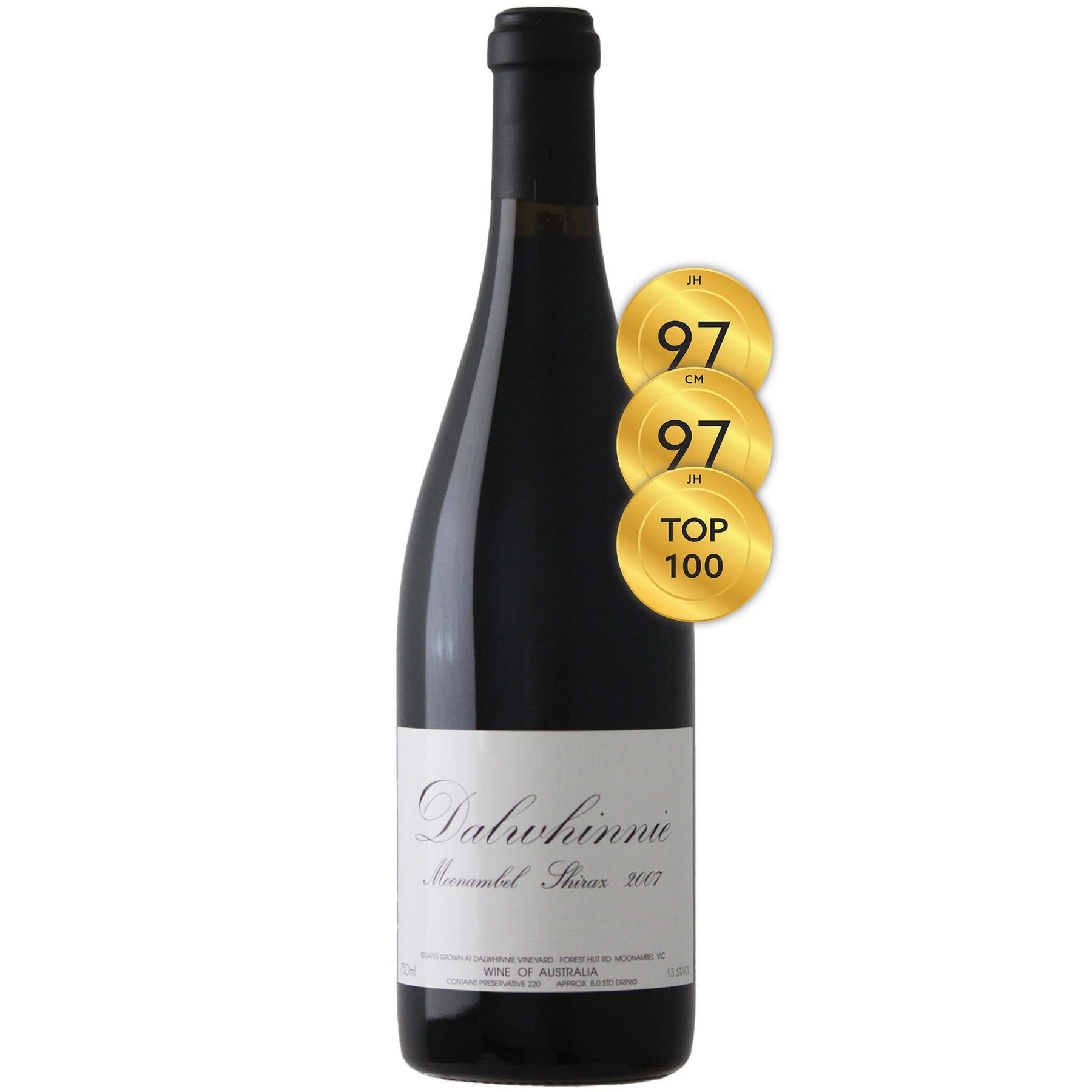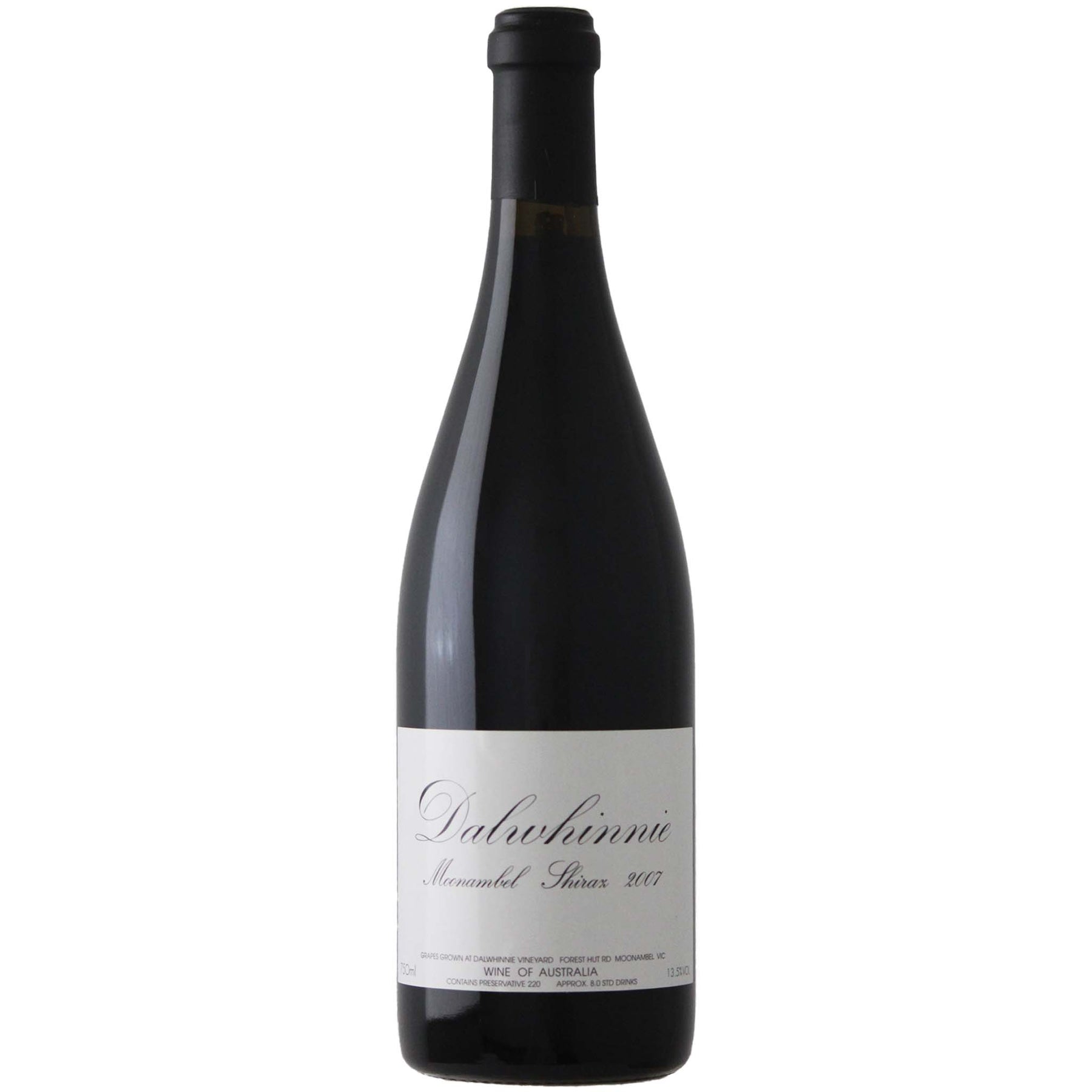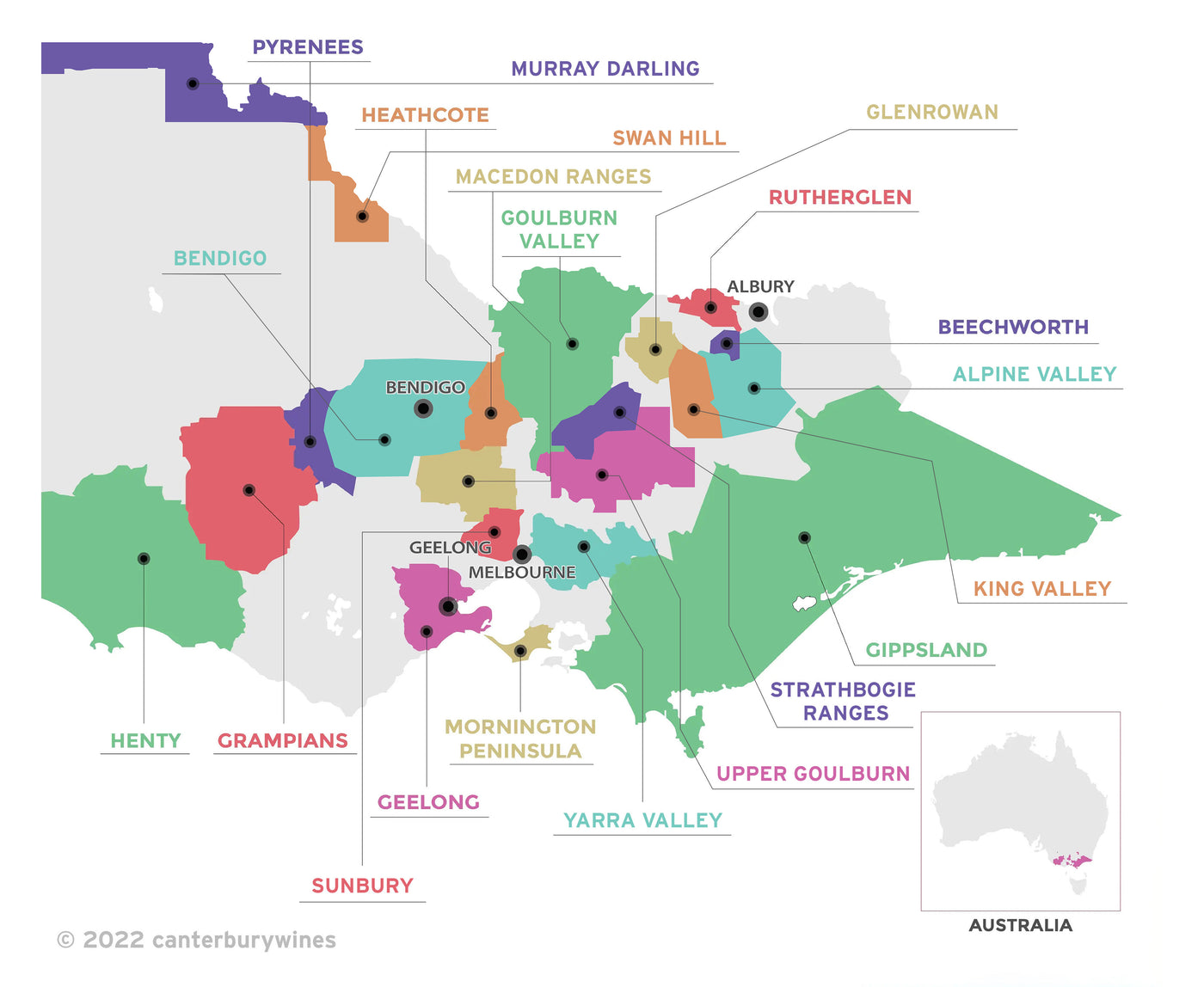

Dalwhinnie Moonambel Shiraz 2007
Style: Red Wine
Closure: Procork
Dalwhinnie Moonambel Shiraz 2007
Warehouse
34 Redland Drive
Vermont VIC 3133
Australia
Critic Score: 97
Alcohol: 13.5%
Size: 750 ml
Drink by: Now
James Halliday Top 100 Wines of 2009
Dalwhinnie, located near the small village of Moonambel in the heart of the Pyrenees region of western Victoria, is one of Victoria's oldest family-run vineyards. Dalwhinnie has been growing grapes for nearly 50 years and the 16-hectare vineyard is now fully mature. At 595 metres above sea level, Dalwhinnie is the highest and most remote of the Pyrenees district vineyards. The vineyard is located in a naturally undulating trough which falls away from the hills, forming an amphitheatre nestled into the ranges.
"Brilliant crimson colour; a marvellous combination of elegance and intensity, the rippling red and black fruit flavours perfectly balanced by silky tannins and oak; extreme length and great balance." James Halliday
"The 28th vintage of this icon wine, and in my opinion the best Dalwhinnie Shiraz to date. The structure and complexity of the wine is very impressive and has the taste and nose of a Grand Cru Hermitage. What is particularly appealing is the freshness of the wine, you can actually enjoy it now or keep for a good 8 years. It is earthy, funky and seriously delicious." David Jones, Winemaker
"The Dalwhinnie Shiraz vineyard is one of Australia's great wine treasures." Campbell Mattinson
Expert reviews
"The 28th vintage of this wine, which owner and winemaker David Jones believes to be the best to date, and I won't argue about that. Brilliant crimson colour; a marvellous combination of elegance and intensity, the rippling red and black fruit flavours perfectly balanced by silky tannins and oak; extreme length and great balance. ProCork. 13.5% alc. Drink Now – 2020." James Halliday, Halliday Wine Companion - 97 points and Top 100 Wines of 2009
"The Dalwhinnie Shiraz vineyard is one of Australia's great wine treasures. It has hit top form here. As good as perfect. Here's that rare beast: it has smoothness, length of flavour, layers to its personality and deliciousness to boot. It has the tannin to age long-term, the balance to make it drink terrifically at any stage of its life and the class to make it stand out. Aged beef, thanks. Drink 2010–2020." Campbell Mattinson and Gary Walsh, The Big Red Book 2009/10 - 97 points
Awards
James Halliday Top 100 Wines of 2009
About the winery

Dalwhinnie, located near the small village of Moonambel in the heart of the Pyrenees region of western Victoria, is one of Victoria's oldest family-run vineyards. Dalwhinnie has been growing grapes for nearly 50 years and the 16-hectare vineyard is now fully mature.
Ballarat architect Ewan Jones purchased the site in 1973 and named it after the Highlands town of his Scottish ancestors. He established the vineyard in 1976 and his eldest son, David, took over its management seven years later. David subsequently purchased the property in 1994 and operated Dalwhinnie until January 2020, when it was acquired by Fogarty Wine Group.
At 595 metres above sea level, Dalwhinnie is the highest and most remote of the Pyrenees district vineyards. The vineyard is located in a naturally undulating trough which falls away from the hills, forming an amphitheatre nestled into the ranges. According to David Jones, the hills and the sedimentary soils of the Pyrenees are vital factors in the vineyard's uniqueness.
The main grape varieties grown are Chardonnay, Shiraz and Cabernet Sauvignon. These small individual vineyards average around 1.8 hectares in size and because of the hungry sedimentary soils, cropping levels are low - only 1.5 tonnes per 0.8 of a hectare.
The site is totally frost-free which enables the grapes to reach optimum ripeness. The vineyard is non-irrigated and operated on strong organic viticultural principles. The fruit is hand-picked and the vines are cane-pruned by hand. Harvest usually starts the third week in February and is completed around the first week in April. Cover crops are sown every year between the vineyard rows to add nitrogen to the soil. The average annual rainfall is 550mm with most rain falling between July and November.
"In Dalwhinnie, the Joneses have happened upon that rare but blessed confluence of factors: site, soil, climate, cultivars, viticultural practices and sensitive winemaking. Sit back and watch, as Dalwhinnie etches a name for itself, not only among the great wines of Australia, but the world." Huon Hooke

Victoria
Victoria is home to more than 800 wineries across 21 wine regions. The regions are Alpine Valley, Beechworth, Bendigo, Geelong, Gippsland, Glenrowan, Goulburn Valley, Grampians, Heathcote, Henty, King Valley, Macedon Ranges, Mornington Peninsula, Murray Darling, Pyrenees, Rutherglen, Strathbogie Ranges, Sunbury, Swan Hill, Upper Goulburn and Yarra Valley.
Victoria's first vines were planted at Yering in the Yarra Valley in 1838. By 1868 over 3,000 acres had been planted in Victoria, establishing Victoria as the premier wine State of the day. Today, the original vineyards planted at Best's Wines are among the oldest and rarest pre-phylloxera plantings in the world.
Victoria's climate varies from hot and dry in the north to cool in the south and each wine region specialises in different varietals. For example, Rutherglen in the north is famous for its opulent Muscats and Topaque and bold reds, while the many cooler climate regions near Melbourne produce world class Chardonnay and pinot Noir. Victoria is truly a wine lover's playground.

